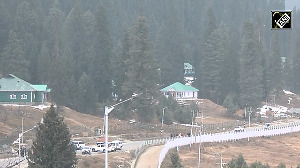On World Cancer Day, here are some tips to protect your largest body organ from cancer.

Skin is the largest organ of body. And according to World Health Organisation, one in every three individuals is at risk of skin cancer.
Although melanin in dark skin (found commonly in Indian and Asian people) largely protects against development of skin cancer, its incidence in Indian population has been gradually increasing.
In India, basal cell cancer is one of the most common type of skin cancer followed by squamous cell cancer and melanoma.
All types of skin cancer differ in their presentation, management and outcome; but share some common risk factors.
The good news is that most of these are preventable.
Here are top 10 factors causing skin cancer and how you can prevent or reduce the risk.
1. UV radiation
Ultraviolet radiation is the most common cause of skin cancer.
Sun rays are the major source of ultraviolet radiation exposure of skin. Both total lifetime exposure and intense intermittent sun exposure (e.g. sunburn) increases the risk.
You should always wear a sunscreen on exposed areas of skin while going out in sun or use umbrella to protect yourself.
2. Tanning beds
Tanning beds may be in vogue, especially when you are on a holiday.
But do you know they emit UVA rays and cause skin cancer?
Thankfully, tanning creams have been reported safe, if used along with a sunscreen.
3. Ionising radiation
Harmful radiation such as that used for acne, tinea capitis and cancer, psoriasis and other skin diseases is another major cause of skin cancer.
The risk increases with radiation dose and is more common in sun-exposed areas.
4. Immunosuppression
Patients with low immunity, particularly those who have undergone transplant, have HIV/AIDS, or are taking long term steroids, are at high risk of developing skin as well as other cancers.
The risk is proportionate to the duration and degree of immunosuppression.
Sun exposure also increases the risk.
5. Chronic inflammation
Chronic skin lesions like non-healing scars, persistent burns wounds, long standing ulcers, sinus tracts also increases the risk of being tested positive for cancer.
If there is a sore/ulcer that’s not healing for some time, go visit a doctor.
6. Arsenic
In various areas in the world, including India, drinking water is contaminated with arsenic.
Prolonged consumption of drinking water that contains arsenic is associated with an increased risk of cancer that affects both your bladder and skin.
In the long run, it can also affect the functioning of your lungs and liver, also causing death.
7. Hereditary factors
These constitute very few cases of skin cancer.
There are some inherited disorders like Xerodermatic pigments, epidermolysis bullosa, albinism, familial atypical mole melanoma syndrome etc which increases the risk of skin cancer by 2,000 times.
In fact, some patients develop skin cancer at a very young age too.
Other associated abnormalities seen in this syndrome helps the doctor suspect and diagnose it.
8. Smoking
Several studies have shown increased risk of cancer being linked to people who consume tobacco.
Besides cancer, smoking is also associated with heart attack and stroke.
9. Presence of Nevi
Nevi or pigmented moles that you may have had since birth or developed recently is an indication that you may be at cancer risk.
High number of nevi indicates increased risk.
Watch out for any change in asymmetry, border, colour, elevation, irregularity or increase in size of an already existing nevus.
Any new changes should be shown to a doctor to rule out melanoma.
10. Targeted drugs
A specific class of drugs called BRAF inhibitors are used in treatment of malignant melanoma. Unfortunately, they are now increasingly being tested for other cancers.
These targeted drugs increase the risk for squamous cell carcinoma of skin.
While doing a regular medical check up, it is also important that you do a complete skin examination from a reputed oncologist to find out if you have developed any early lesion.

Dr Mohit Agarwal is additional director and head of department, medical oncology, Fortis Hospital, Shalimar Bagh. He can be reached on ga@rediff-inc.com.










